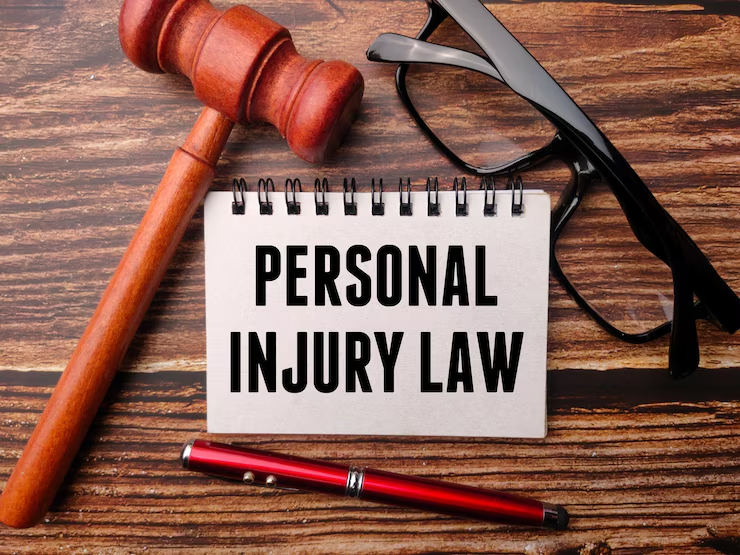Personal injury law is a critical area of the legal system in the USA, designed to provide compensation for those who have suffered harm due to someone else’s negligence. Whether it’s a car accident, medical malpractice, or a slip-and-fall, personal injury claims are about holding wrongdoers accountable and helping victims recover. Firms like Thomas Law Offices specialize in advocating for victims and ensuring they receive the compensation they deserve. In this article, we will dive into the fundamentals of personal injury law in the USA, look at two recent landmark cases, and provide helpful insights for those seeking legal advice in this area.
What Is Personal Injury Law?
Personal injury law, also known as tort law, allows an injured person to file a lawsuit in civil court to get compensation for damages. These damages can include physical injuries, emotional distress, loss of wages, medical expenses, and even property damage. The goal of personal injury law is to restore the injured party, as much as possible, to their pre-accident condition.
In personal injury cases, the plaintiff (injured person) must prove that the defendant (the party being sued) was negligent or responsible for the injury. This generally involves showing that the defendant had a duty of care, breached that duty, and caused harm as a result.
Common Types of Personal Injury Cases
Personal injury law covers a broad range of incidents, and the specifics can vary by state. Here are some common types of personal injury cases:
1. Car Accidents – These are among the most frequent personal injury cases in the U.S. When a driver is negligent, they can be held responsible for injuries caused in an accident.
2. Medical Malpractice – Healthcare professionals may be sued if they fail to meet the appropriate standard of care, leading to patient injury or harm.
3. Slip and Fall – Property owners are responsible for maintaining safe conditions. If someone is injured due to unsafe conditions, the owner may be liable.
4. Product Liability – When defective products cause harm, the manufacturer or seller may be held accountable.
5. Workplace Injuries – Employees injured on the job may have a claim for workers’ compensation or a personal injury lawsuit, depending on the circumstances.
The Process of Filing a Personal Injury Claim
Filing a personal injury claim involves several steps, from initial consultation to trial (if necessary). Here’s a breakdown of the process:
- Consultation with an Attorney: This is the first step, where you discuss the details of your case and determine whether it’s viable to pursue legal action.
- Investigation and Gathering Evidence: Your attorney will collect evidence to support your claim, including medical records, police reports, and witness statements.
- Demand Letter: Once the evidence is gathered, a demand letter is typically sent to the defendant, outlining the injuries, damages, and the amount of compensation being sought.
- Negotiation: Most personal injury cases are settled out of court through negotiations between the parties. If both parties agree, the case ends here.
- Filing a Lawsuit: If negotiations fail, a lawsuit may be filed. This begins the formal legal process, where the case could eventually go to trial.
Understanding Compensation in Personal Injury Cases
Compensation in personal injury cases generally falls into two categories: economic and non-economic damages.
1. Economic Damages: These are measurable costs related to the injury, such as medical bills, lost wages, and property damage.
2. Non-Economic Damages: These damages cover intangible losses like pain and suffering, emotional distress, and loss of enjoyment of life.
In some cases, punitive damages may also be awarded. These are meant to punish the defendant for particularly reckless behavior, rather than simply compensate the victim.
Examples of Landmark Personal Injury Cases
Landmark cases in personal injury law can set important precedents, influencing how similar cases are handled in the future. Here are two recent examples that made headlines:
1. McDonald’s Hot Coffee Case (Liebeck v. McDonald’s Restaurants)
Although not recent, the Liebeck v. McDonald’s case continues to be one of the most discussed personal injury cases. In 1992, Stella Liebeck suffered third-degree burns after spilling hot coffee in her lap. She sued McDonald’s, arguing that the coffee was dangerously hot and that the company had ignored previous complaints. The jury awarded her $2.7 million in punitive damages, which was later reduced, but the case became a key moment in understanding corporate responsibility and product liability.
2. Johnson & Johnson Talcum Powder Lawsuits (2018-2020)
A more recent and widely-publicized example involves Johnson & Johnson’s talcum powder products. Thousands of women filed lawsuits claiming that the company’s baby powder, when used for feminine hygiene, caused ovarian cancer. In 2018, a Missouri jury awarded $4.69 billion to 22 women who developed ovarian cancer. Although Johnson & Johnson continued to defend the safety of its products, this case was pivotal in product liability and mass tort litigation.
3. Roundup Weedkiller Lawsuits (2020)
In 2020, Bayer, the company that acquired Monsanto, agreed to pay over $10 billion to settle tens of thousands of lawsuits involving Roundup weed killer. Plaintiffs claimed that exposure to Roundup caused them to develop cancer, specifically non-Hodgkin’s lymphoma. This case not only highlighted the potential dangers of common household products but also raised awareness about the importance of transparent product labeling and corporate accountability.
Statute of Limitations in Personal Injury Cases
The statute of limitations is a legal timeframe in which you must file your personal injury claim. This period varies by state, but typically, plaintiffs have between one to six years to file a lawsuit, depending on the type of case and jurisdiction. Failing to file within this period usually means losing the right to seek compensation.
It’s essential to be aware of the statute of limitations in your state, as missing the deadline can prevent you from taking legal action.
The Importance of Hiring a Personal Injury Lawyer
Navigating a personal injury claim without legal assistance can be daunting, especially if you’re dealing with serious injuries and mounting medical bills. A personal injury lawyer can be an invaluable resource in guiding you through the legal process, from gathering evidence to negotiating with insurance companies.
A good attorney can also:
- Maximize Your Compensation: Experienced lawyers understand how to build a strong case and negotiate effectively to ensure you receive fair compensation.
- Provide Peace of Mind: Handling legal matters while recovering from an injury can be overwhelming. Having a lawyer manage the legal side of things allows you to focus on your recovery.
- Represent You in Court: If your case goes to trial, a lawyer will represent your interests and advocate on your behalf to ensure the best possible outcome.
Conclusion: Protecting Your Rights After an Injury
Personal injury law in the USA is designed to protect those who have suffered harm due to another party’s negligence. Whether it’s a car accident, medical malpractice, or a defective product, the right to compensation is crucial for covering expenses and restoring peace of mind. By understanding the process and seeking the help of a qualified personal injury lawyer, you can ensure that your rights are protected and your case is handled properly.
If you’ve been injured and believe you may have a personal injury claim, don’t wait too long to take action. The statute of limitations varies by state, so consulting a lawyer as soon as possible is the best way to protect your rights and maximize your chances of success.
Also Read: Understanding Adelaide’s Personal Injury Laws: Your Rights and Responsibilities



